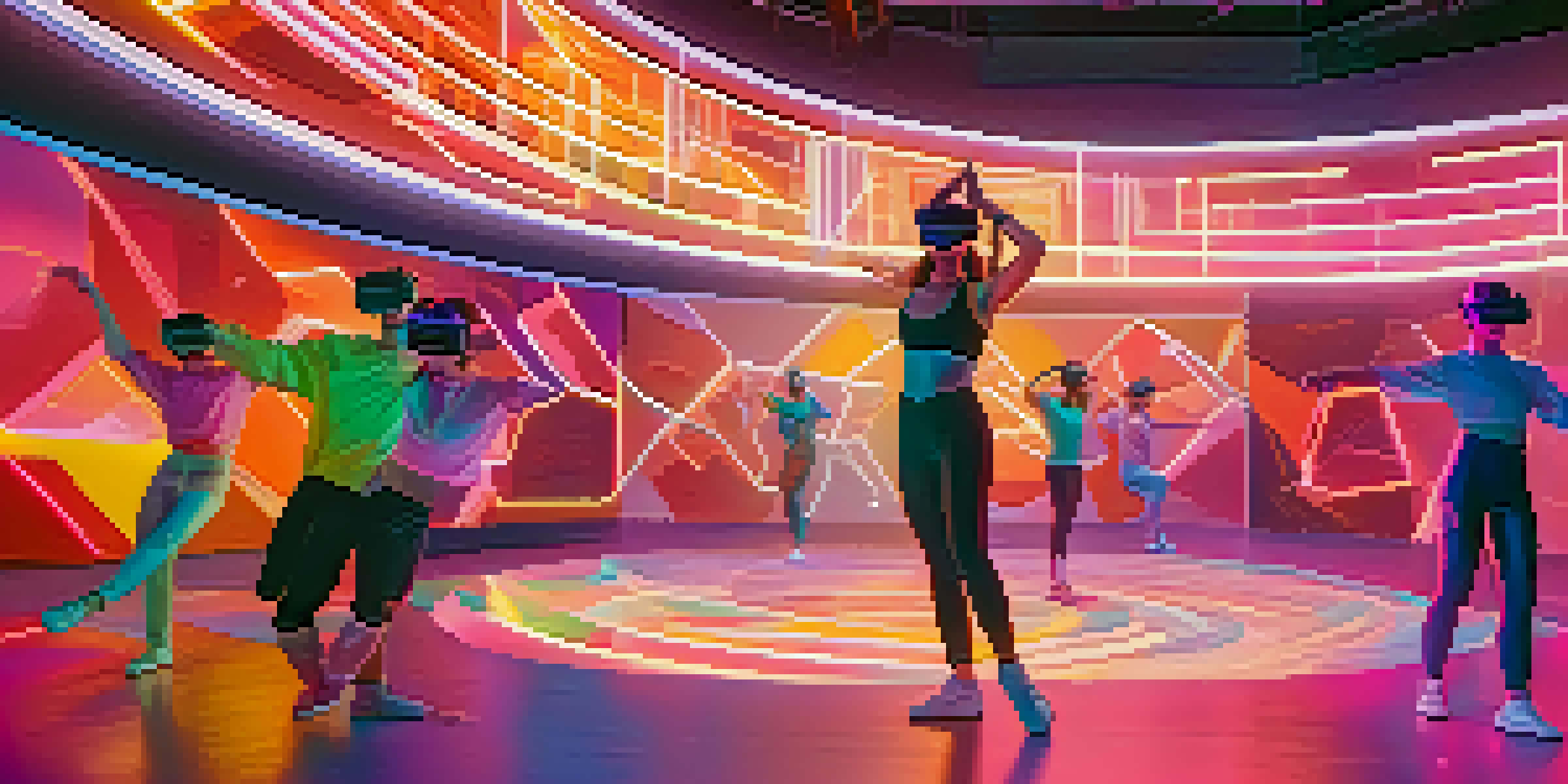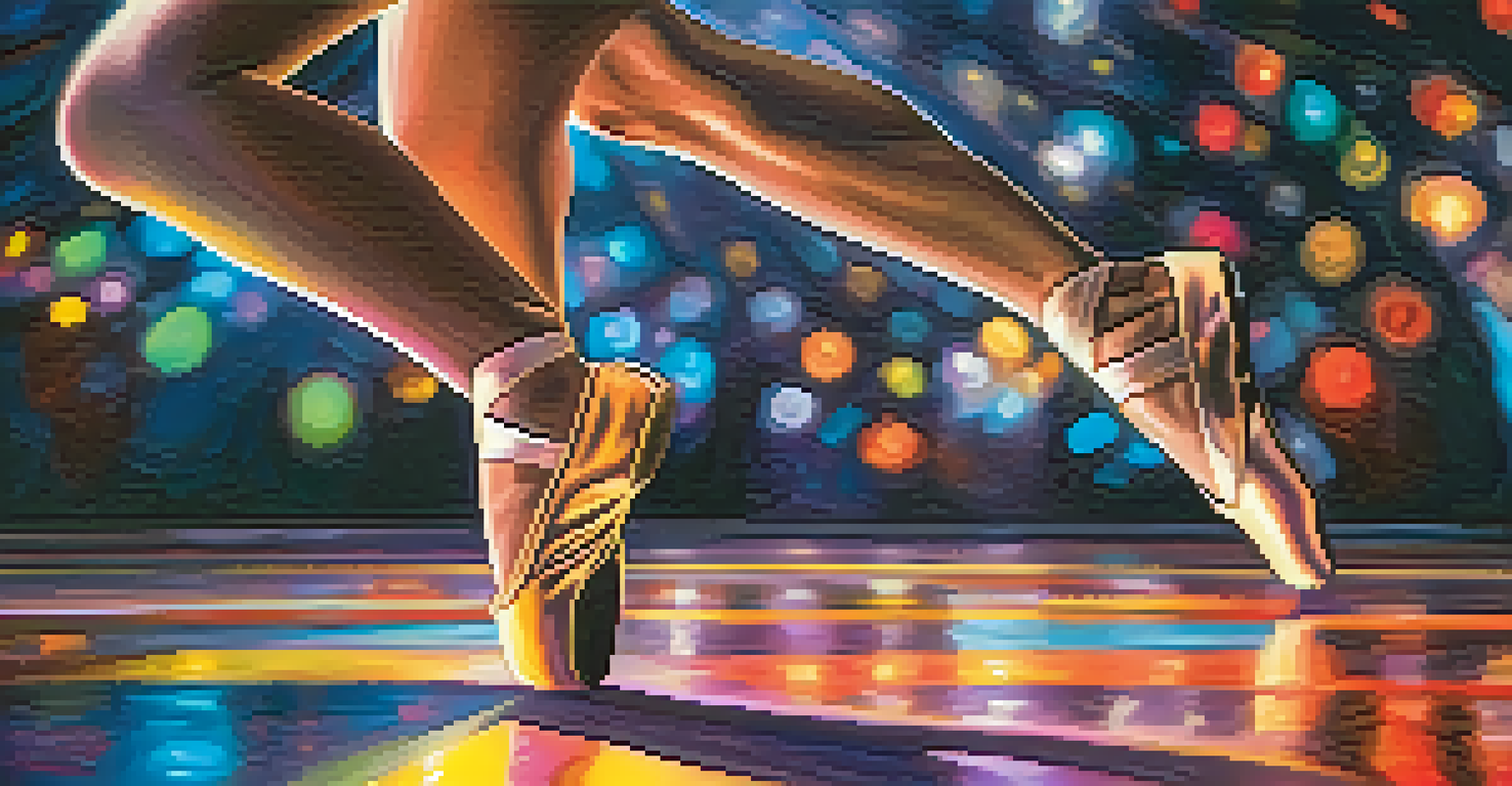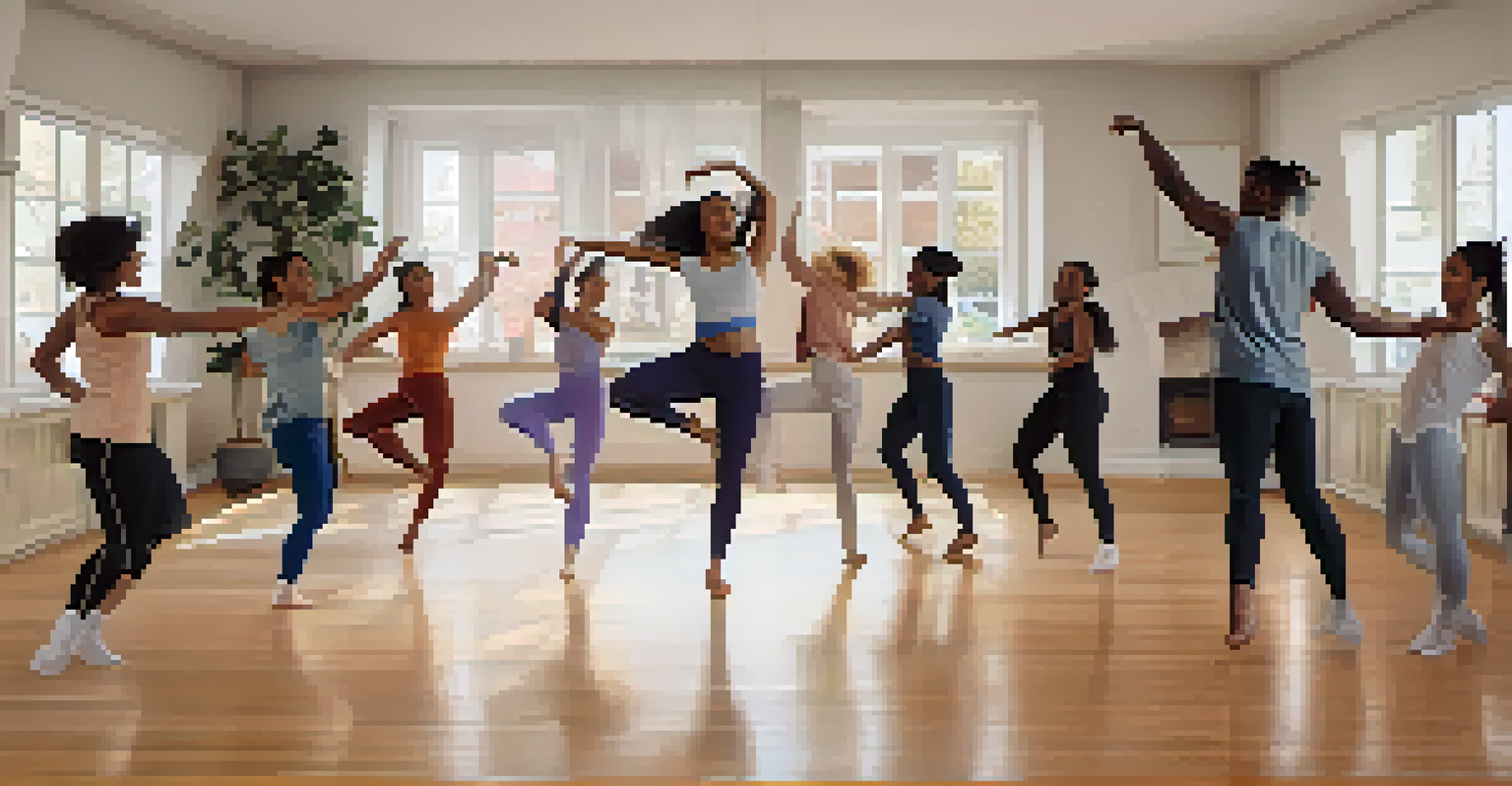Virtual Reality Dance Classes: A New Era of Learning

Introduction to Virtual Reality in Dance Education
Virtual reality (VR) is emerging as a game-changer in various fields, including education. When it comes to dance, VR offers a unique platform that blends technology and artistry. Imagine stepping into a virtual studio where you can learn from top instructors, no matter where you are in the world.
Technology is best when it brings people together.
This innovative approach breaks down geographical barriers, allowing dancers to connect with mentors and peers globally. It's an exciting opportunity for both beginners and seasoned dancers to enhance their skills in a supportive environment. With VR, the classroom is no longer confined to four walls; it’s as expansive as your imagination.
As we dive deeper into this new era of learning, let’s explore how VR dance classes are reshaping the way we think about dance education.
The Benefits of Virtual Reality Dance Classes
One of the most significant advantages of VR dance classes is the immersive experience they provide. Dancers can practice in a fully interactive environment that simulates real-world settings, from studios to stages. This level of engagement can boost motivation and retention of dance techniques.

Moreover, VR allows for personalized learning experiences. Instructors can provide tailored feedback in real-time, helping students correct their form and improve their performance instantly. This immediate interaction enhances the learning curve, making it easier to grasp challenging concepts.
VR Enhances Dance Learning Experience
Virtual reality provides an immersive and interactive environment that boosts motivation and allows for real-time feedback.
Additionally, dancers can revisit lessons as often as needed, making it a flexible option for busy schedules. Whether you’re fitting in a quick session between work commitments or dedicating hours to practice, VR adapts to your lifestyle.
Accessibility for All Skill Levels
Virtual reality makes dance classes accessible to everyone, regardless of their skill level. Beginners can start with foundational movements without the intimidation of a crowded studio. They can learn at their own pace, gradually building confidence before moving on to more complex routines.
The future belongs to those who believe in the beauty of their dreams.
For advanced dancers, VR offers the chance to refine their technique and explore new styles. Specialized classes can introduce them to genres they may not have had the opportunity to try in their local community. This inclusivity fosters a diverse environment where everyone can flourish.
Ultimately, the accessibility of VR dance classes opens doors for individuals who may have felt excluded from traditional dance settings, encouraging a wider appreciation for the art form.
Engaging with a Global Dance Community
One of the most exciting aspects of VR dance classes is the opportunity to connect with a global community. Dancers from different backgrounds and cultures can share their experiences and techniques, enriching the learning process. This cross-cultural exchange helps broaden perspectives and inspires creativity.
Virtual dance competitions and showcases allow participants to display their skills on an international stage. Imagine performing in a competition with judges and fans from around the world without ever leaving your home. This level of engagement can fuel a dancer’s passion and drive.
Accessible to All Skill Levels
VR dance classes cater to beginners and advanced dancers alike, fostering a diverse community and encouraging personal growth.
The sense of belonging to a global community fosters collaboration and support. Dancers can form virtual friendships and partnerships, providing encouragement and motivation to one another.
Technology Enhancements in VR Dance Classes
The technology behind VR dance classes is continuously evolving, making lessons more engaging and effective. Advanced motion tracking systems allow instructors to see participants’ movements in real time, providing precise feedback. This technology enhances the learning experience by pinpointing areas for improvement.
Additionally, VR programs often include gamification elements, turning practice into a fun and interactive experience. Dancers can earn points, unlock achievements, or compete in challenges, making learning feel less like work and more like play.
These advancements not only keep dancers motivated but also encourage them to push their boundaries. The blend of technology and creativity opens up endless possibilities for what can be achieved in the world of dance.
Challenges and Considerations of VR Dance Classes
While the benefits of VR dance classes are numerous, there are challenges to consider as well. For those new to the technology, navigating VR platforms can be daunting. It’s essential for instructors to provide clear guidance and support to help students feel comfortable.
Moreover, the physical space required for VR can be a limitation for some. Dancers need adequate room to move freely, which might not be feasible in smaller living environments. However, many VR programs offer options for different space requirements, making it easier for everyone to participate.
Global Community Connection
VR enables dancers to connect with peers worldwide, sharing experiences and participating in international competitions.
Lastly, it’s crucial to balance screen time with physical activity. While VR is a fantastic tool for learning, incorporating traditional classes and real-life interactions remains essential for overall development as a dancer.
The Future of Dance Education with VR
As we look ahead, the future of dance education with VR appears bright. With technology advancing rapidly, we can expect even more immersive experiences that enhance learning. Innovations such as augmented reality (AR) may soon complement VR, creating hybrid classes that blend physical and virtual elements.
Furthermore, as more schools and studios adopt VR, the landscape of dance education will continue to evolve. This integration can lead to a richer, more diverse learning environment, where creativity knows no bounds. Students will have access to a wealth of resources at their fingertips, from instructional videos to interactive tutorials.

Ultimately, the goal is to inspire a new generation of dancers who are not only skilled but also equipped with the tools to express their creativity in exciting ways. The possibilities are endless, and we’re just beginning to scratch the surface of what VR can offer in the world of dance.